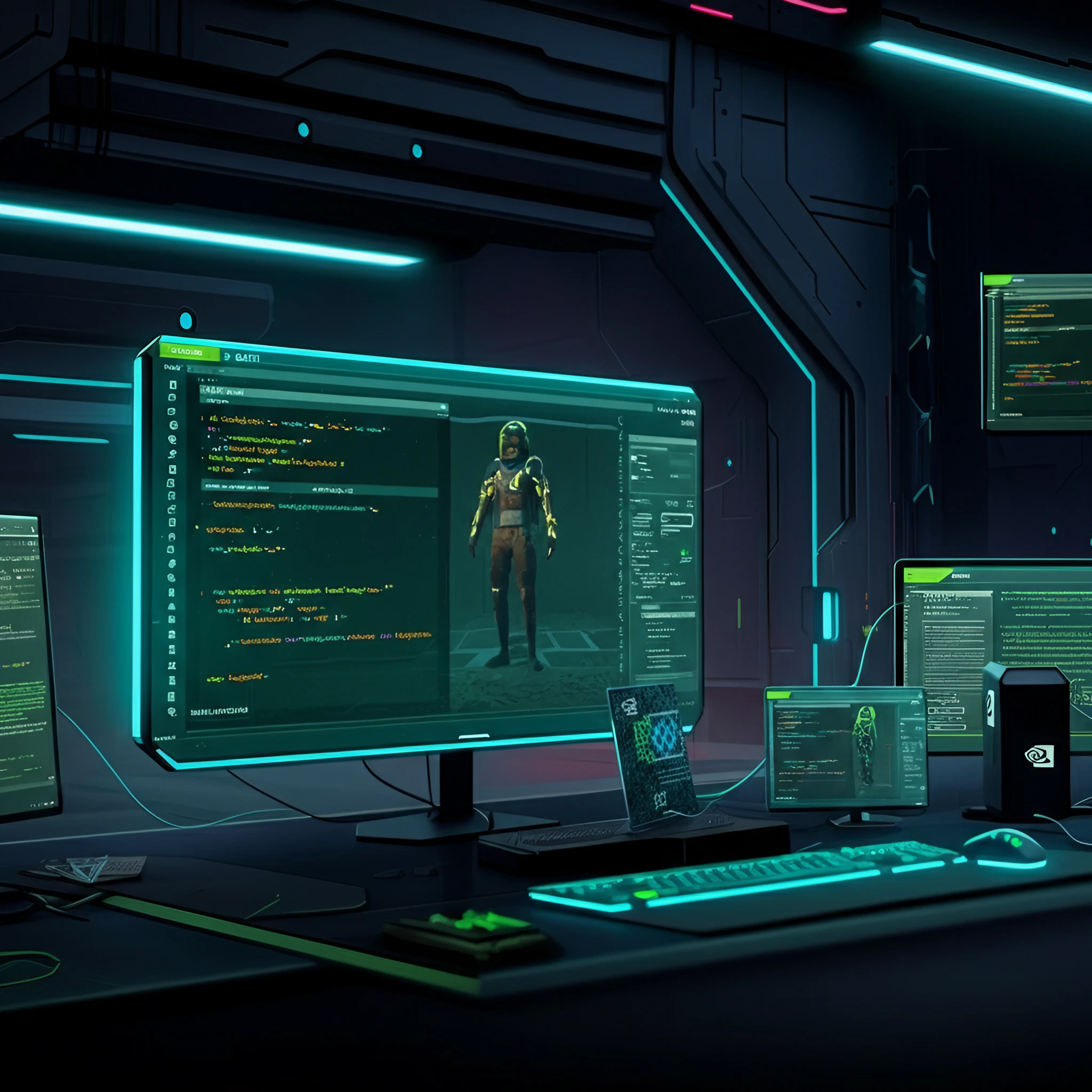The gaming industry has witnessed a wave of groundbreaking innovations over the years, but the collaboration between NVIDIA and Microsoft is poised to launch it into an entirely new dimension. With the introduction of Neural Shading Technology, these two tech giants are redefining what’s possible for gamers, developers, and enthusiasts alike. This combination of advanced AI and traditional rendering marks a key milestone in gaming history.
In this article, we’ll explore what Neural Shading is, how it works, and why the NVIDIA-Microsoft partnership is bound to make waves in the gaming landscape. Buckle up as we peer into the next generation of gaming.
What is Neural Shading Technology?
Neural Shading is an innovative rendering method that merges AI-powered neural networks with traditional shader programming. By utilizing AI Tensor Cores found in NVIDIA’s GeForce RTX GPUs, Neural Shading accelerates processes within the graphics pipeline to achieve:
- Enhanced Visual Fidelity – Superior image quality with richer textures and realistic lighting.
- Boosted Frame Rates – Fluid gameplay without compromising visuals.
- Reduced Resource Usage – Efficient rendering that optimizes system performance.
It empowers developers to incorporate high-quality graphics with fewer computational resources, enabling stunning visuals at a fraction of the typical processing cost.
How It Works
Traditional shading requires complex calculations that can bog down system resources. Neural Shading employs pre-trained AI models within the game’s shaders to simplify these calculations. The result? Cleaner textures, smoother animations, and ultra-high frame rates without overloading GPUs.
Shawn Hargreaves, Direct3D Development Manager at Microsoft, describes it as “rewriting the rulebook of graphics programming.” With the DirectX update, developers can now tap into these AI tools to craft extraordinary gaming experiences.
The Power of Partnership
The collaboration between NVIDIA and Microsoft promises to shape the future of game development and playability. This partnership is already making headway with:
- DirectX AI Support
Microsoft is integrating cooperative vector support into DirectX and HLSL, allowing developers to fully leverage the power of RTX Tensor Cores.
- NVIDIA RTX Kit Updates
The latest updates to NVIDIA’s RTX Kit bring enhanced features, such as Mega Geometry and RTX Hair, seamlessly integrated into Unreal Engine 5.
This synergy between Microsoft’s software capabilities and NVIDIA’s hardware innovations sets a new standard for immersive, high-performance gaming.
“Half-Life 2” RTX Demo
To showcase their advancements, the two companies unveiled an RTX demo for Half-Life 2. It demonstrates real-time ray tracing, DLSS 4-powered frame enhancements, and other neural-rendering capabilities. Released as a playable demo, it offers an exclusive glimpse into the future of gaming.
What It Means for Gamers and Developers
This leap in gaming technology isn’t just technical jargon. It has real implications for both gamers and developers:
For Gamers
- Unparalleled Realism – Deeply immersive environments with true-to-life lighting and textures.
- Silky Smooth Gameplay – Elevated frame rates, even in the most graphically demanding scenarios.
- Accessibility – High-quality gaming without needing the most bleeding-edge hardware.
For Developers
- Streamlined Development – Faster workflows with AI handling repetitive or intensive rendering tasks.
- Creative Freedom – Tools like RTX Hair and Mega Geometry empower developers to build stunning, complex game worlds efficiently.
- Bringing Classics to Life – Features like NVIDIA RTX Remix allow modders to remaster older games with modern, eye-popping visuals.
One of the most exciting aspects is the massive reduction in development costs. Studios can now produce AAA-quality visuals without the exorbitant need for lengthy render times or overscaled resources.
The Future of Gaming Technology
Neural Shading isn’t just a breakthrough; it’s a glimpse of what’s to come. With over 100 DLSS 4-enabled games and applications already on the market, rapid adoption is a clear indicator of the tech’s impact.
Key Advancements to Look Forward To
- Advanced Ray Tracing – RTX Mega Geometry allows up to 100x more triangles in detailed game worlds.
- AI Frame Generation – DLSS 4 technology can deliver 8x faster frame rates, making even the most demanding games buttery smooth.
- Next-Gen Rendering Demos – NVIDIA’s Zorah tech showcases the unmatched potential of neural rendering in Unreal Engine 5.
This is just the beginning. Neural Shading could expand beyond gaming to applications like virtual reality, digital twins, and cinematic production.
Real-World Example
Games like Phantom Blade Zero and Stellar Blade showcase the power of DLSS 4 and have already set a new benchmark for visual storytelling.
NVIDIA and Microsoft: Ushering in a New Era
The collaboration between NVIDIA and Microsoft cements their position as tech leaders and disruptors in the gaming world. By pushing the limits of what AI can do and integrating it seamlessly into traditional rendering systems, they are bridging the gap between a developer’s vision and a gamer’s reality.
Neural Shading Technology is more than just an exciting innovation. It’s the dawn of a new era in gaming – one where creativity, performance, and immersion coexist like never before.
Whether you’re a gamer looking for breathtaking visuals or a developer seeking tools that bring your imagination to life, this is your sign to keep an eye on NVIDIA and Microsoft. The future of gaming is here, and it has never looked better.
Explore More
Want to learn more about the technology shaping the gaming industry? Visit NVIDIA’s official site to see demos, updates, and more groundbreaking announcements.








